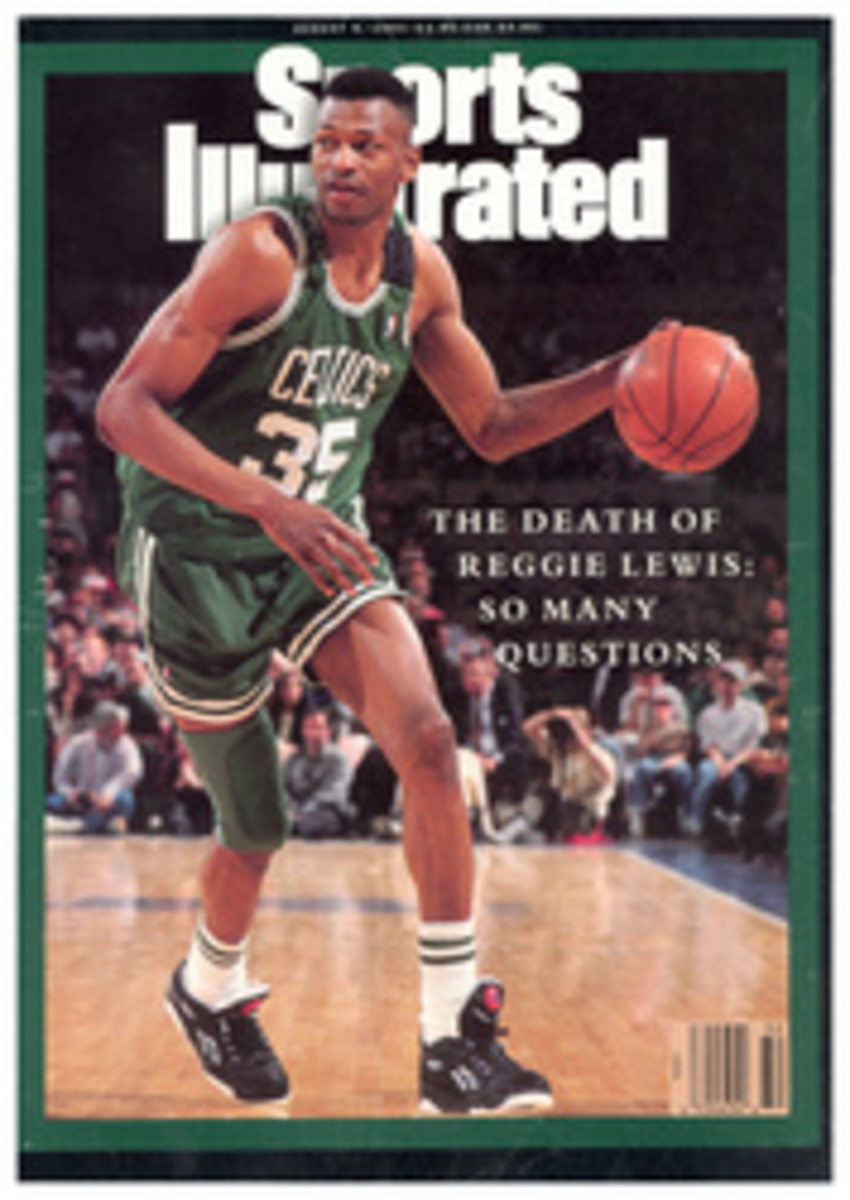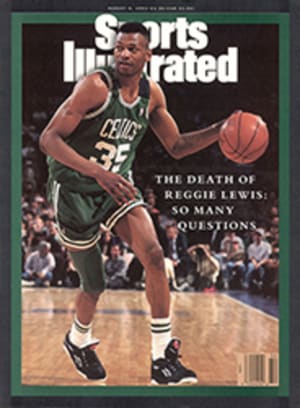
At the U.S. Olympic Festival
Mark Henry
It made sense that the weightlifting venue at the U.S. Olympic Festival last week was San Antonio's Lila Cockrell Theatre. The strongest man at the festival was also its biggest ham.
Mark Henry wears size 16EEE shoes, a size 62 jacket and the mantle of goodwill ambassador for his sport, a title the 6'3", 365-pound superheavyweight bestowed upon himself. Anybody have a problem with that?
The 22-year-old Texan saw his mission in San Antonio as making the festival fun. On his first day in town he arm-wrestled USOC executive director Harvey Schiller. After missing a half-court shot during halftime of the men's gold medal basketball game—he left it well short—he immediately and melodramatically clutched his lower back. The crowd roared. Unlike his fellow lifters, a band of rippling stoics, Henry celebrated successful lifts by firing, and then bolstering, an imaginary six-shooter. After easily winning his division, he took care not to step on the children who flocked to him like birds to St. Francis of Assisi.
He is always entertaining, though he doesn't always entertain intentionally. Every Henry lift is an adventure. "Remember, Mark has been lifting seriously for less than three years," says Dragomir Cioroslan, who coaches Henry. After just nine months under Cioroslan's tutelage at the Olympic Training Center in Colorado Springs, Henry placed 10th at Barcelona. In his first year of competing, he broke and rebroke the three junior (20-and-under) American records 12 times and surpassed 36-year-old Mario Martinez as this country's top superheavy. Says Cioroslan, who won a bronze medal for Romania at the '84 Olympics, "I lifted for 16 years, I've coached for nine and I've never seen anyone with Mark's raw talent."
With San Antonio just 270 miles from his hometown of Silsbee, Texas, Henry was the most-recognized athlete at the festival. No matter where he competes, however, children gravitate to him. "They know I'm one of 'em," he says. "I'm the biggest kid of 'em all." At times Cioroslan wishes Henry would be a little less childlike. "He likes to talk, he likes to share," says the coach. "He wants to play golf and dunk basketballs." To his chagrin, Henry—who, astonishingly, can jam—participated in a recent Footlocker Slamfest in Phoenix. "To continue with his progress," says Cioroslan, "he must be careful about interfering with his lifting program."
Two years ago Henry's best total in competition was 300 kilos (661¼ pounds). Today it is 385 (848¾ pounds). Cioroslan figures Henry will need to add 40 kilos (88 pounds) to his total if he is to win a medal in Atlanta in '96. "After adding 85 kilos in two years, I think he can give me another 40 over four years," says the coach. "In fact, I think he can do it in one year."
Henry's last lift in San Antonio was his best. With 205 kilos (451¾ pounds) over his head, he heard the buzzer, freeing him to drop the weight. Instead, Henry stood before the cheering crowd, holding the bar aloft as if to say, I could keep this here all night. Finally, after four or five seconds, the referee ordered him to drop it.
Cioroslan could only smile at his pupil's audacity. "We are very fortunate to have Mark," he said. "He makes our sport a show."
Felicia Zimmermann
Fencing tries to hide its true nature behind crisp whites and rigid protocol, but when it comes right down to it, the point is to stab one's opponent. The sport's essential paradox is alive and well in Felicia Zimmermann, a demure 17-year-old who graduated this spring from The School of the Arts in Rochester, N.Y. Zimmermann has to be coaxed into a discussion of her artistic talents, "I played the piano for 10 years," she says. "My favorite piece is Brahms's Rhapsody Number 2." And? "I do sculpture." Of anything in particular? "Vessels, hands, faces, masks." "People who know me," she says, "are shocked, sometimes, by my artwork." For instance? "I made this big face with gouged-out eyes and bars across the mouth, with little plastic dolls entwined in the bars. I don't know where it came from. My dark side, I guess." The ability to tap into her dark side has made Zimmermann one of the U.S.'s most promising fencing talents in the last decade. In June she won the women's foil title at the national championships, in Fort Myers, Fla., and last week she was one of the stars of the U.S. Olympic Festival.
On Friday night in San Antonio, the North's women's foil team was on the cusp of a startling upset. The South team, the North's opponent in the finals, included the nucleus of the national team—minus Zimmermann, who because of her tender years had been assigned a place on the North along with the country's other top junior fencers. After 15 bouts, the juniors led the seniors 8-7. The team gold would be decided by a final bout between Zimmermann and 21-year-old Olga Chernyak. Five touches are required to win about: Chernyak, doing most of the attacking, quickly took a 3-2 lead. "Usually," Zimmermann said afterward, "she's not that aggressive."
Buckie Leach, who has coached Zimmermann for 10 years, says, "I've had kids who were stronger and quicker, but none of them did as well as Felicia, because they lacked her discipline and inner strength."
Felicia's father, Thomas, is German; her mother, Christina, is Taiwanese. At 5'6", 110 pounds, Zimmermann is physically unimposing and knows it. And uses it. "I've always been smaller than the others," she says. "So I've had to find something to make up for that. I'm really fierce. I scream, I yell, I never give up." Against Chernyak, Felicia successfully parried the older fencer's attacks and then counterattacked to win, 5-3, earning the gold medal for her team. Next month Zimmermann flies to Bonn, where she will fence for a year at one of the top schools in Europe. The Germans may not, at first, be impressed by this slight young woman, but they will soon discover that there is more steel to her than the weapon in her hand.
Darrick Heath
Earth to the U.S. team Handball Federation: Change your name! You are presiding over a fast-paced sport whose name ensures its continued status as a brilliantly kept secret. People hear "handball" and they think of middle-aged guys in black socks slapping a rubber ball against a wall at the Y.
After scoring 10 goals in the East team's 23-18 win over the South in the U.S. Olympic Festival's team handball finals on July 27th, Darrick Heath made a suggestion: "Call it Speedball. Call it Killball. Anything but Handball." Call it Heathball for the U.S.'s best player.
Heath took up team handball as an afterthought. After basketball practice one day during his senior season at C.W. Post, in 1988, he was approached by a white-haired Hungarian in an Olympic sweat suit. It was Laszlo Jurak, the Johnny Appleseed of team handball and coach of the Garden City (N.Y.) THC, the latest of three clubs he has founded since arriving in the U.S. from Budapest in 1956. Jurak challenged Heath. "Are you going to the NBA? Yes or no?" Jurak asked. "How would you like to play in the Olympics?" As a 6'4", 215-pound "tweener, Heath was all but assured of being cut if he tried out for an NBA team. A few months after that, Heath concluded that his pro hoops career wasn't going anywhere and headed for Garden City and Jurak.
Seven years later he is the most gifted player in the brief history of team handball in America and a shoo-in for the '96 Olympic team. (Team USA will have an automatic berth in Atlanta.) In the interim Heath will join the Budapest Elektromos, whose coach, after seeing him play last February at the world championships in Sweden, offered him a contract on the spot.
Team handball is like water polo without the water. There are seven players on a side and there is a premium on running and leaping. It helps to have a pitcher's arm and the perimeter passing skills of a water polo player. Heath, with his 44-inch vertical leap and 4.4-second 40-yard-dash speed, pitched in high school and played water polo. To the extent that such a thing is possible, he was born to play team handball.
Before games, he earned pocket money by betting opponents that he could take three steps, leap and touch a basketball backboard with his foot. "The first time he told me he could do that, I said, 'No way,' " recalls fellow national team member Craig Fitschen of Dix Hills, N.Y. "Boom! He takes off. Next thing you know there's his footprint in the square. That's a nice hop."
Two days after the gold medal game at the festival. Heath was on a plane to Hungary. For a 26-game season Elektromos will pay him "between $60,000 and $70,000." On the eve of his departure for Europe, Heath was still in a state of mild disbelief. "I've traveled 100,000 miles." he says. "I was in Berlin when the Wall was coming down. I was in Bosnia before it went crazy over there. I was in Czechoslovakia just after they elected a democratic government. I've seen history, things I'll tell my kids about." Not bad for a 'tweener from Division II who plays a game with an uninspired name.
PHOTO
DOUG DEVOE
The superheavyweight lifted more than 450 pounds, not to mention the spirits of the fans, in San Antonio.
PHOTO
PATRICK MURPHY-RACEY
The U.S. women's foil champion is an artist, and not just with a sword in her hand.
PHOTO
DOUG DEVOE
The U.S.'s best team handball player, an exhoopster, can leap tall backboards (almost) with a single bound.

